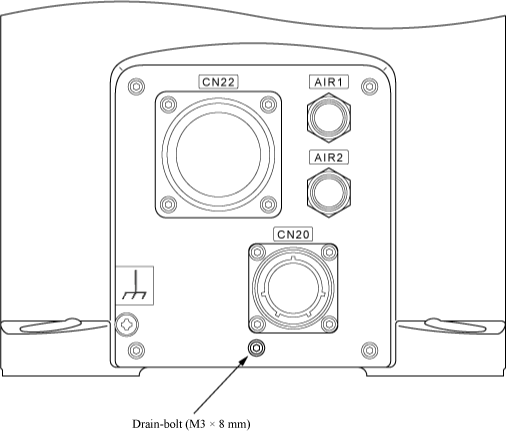ID : 1211
Robot Mount
Maximum Reaction Force Applied to the Robot Mount
This page shows the maximum reaction force generated on the robot installation surface when the robot moves.

| Overturning moment Ml: | 740 Nm |
|---|---|
| Torsional moment Mt: | 344 Nm |
| Horizontal translational force Fh: | 1031 N |
| Vertical translational force Fv: | 1230 N |
Example of a Mount for a Floor-Mounted Robot
 |
- When a robot operates at high speed, the robot mount undergoes large reaction forces. The mount must be rigid enough so that it will not vibrate or be displaced due to reaction forces. It is also advisable to mechanically join the robot mount with heavy equipment.
- Some mounts may produce a resonance sound (howling). If this sound is loud, increase the rigidity of the mount or slightly modify the robot speed.
Example of a Mount for an Overhead-Mounted Robot
 |
- When an overhead-mounted robot operates at high speed, the top plate structure undergoes large reaction forces. Design a vibration-proof mount so that its top plate will not vibrate due to the reaction force. In addition, ensure that the top plate for robot installation is structurally separate and independent from other part of the robot system/cell.
- Some mounts may produce a resonance sound (howling). If this sound is loud, increase the rigidity of the mount or modify the robot speed.
Precautions for Mounting the Dust- & Splash-Proof Type Robot Unit on the Floor
The dust- & splash-proof type robot unit has a drain bolt (M3 x 8 mm) screwed into the drain hole on the bottom. When mounting the robot unit on the floor, remove the drain bolt shown below.
When mounting the robot unit overhead, do not remove the drain bolt. If an overhead-mounted robot is used without the drain bolt, a malfunction may occur.
 |
ID : 1211

